Osteoarthritis of the hip, otherwise referred to as coxarthrosis, is one of the most serious diseases of a modern person, often leading to disability. Its first manifestations - mild pain in the groin - are usually ignored. A patient seeks qualified medical help, as a rule, when drug treatment is already ineffective and arthroplasty is required.
Reasons
Osteoarthritis of the hip joint occurs due to a combination of different, unfavorable circumstances. Complete microtraumas and injuries make up about one-fifth of the total number of cases (average 10-20%).
Other causes of hip osteoarthritis include:
- Excessive loads.
- Heart attack or aseptic necrosis of the hip joint.
- Prolonged stress, prolonged depression.
- Mbipesha.
- Inheritance.
- Congenital anomalies and underdevelopment.
- Inflammatory processes in the joints.
- Hormonal background failure.
Excessive loads

Until recently, it was believed that excessive physical exertion, many hours of walking, hard work (as a loader) is the main cause of osteoarthritis. But it is not so.
A healthy joint, which has never been damaged, perfectly tolerates any stress, especially at a young age, and nothing happens to it.
But if once, even in childhood, there was microtrauma, then such a joint is a candidate for the development of coxarthrosis. Therefore, the disease occurs in 20-30% of cases.
Heart attack
This is a violation of blood flow to the joint. In other words, the disease is called aseptic necrosis of the hip joint, which usually occurs after injury.
In addition to injury, the cause of a heart attack can be:
- Excessive alcohol consumption.
- Frequent injections of corticosteroids.
- A sudden shock (severe stress).
- Excessive loads, once in a while when a person is not ready for them.
Heart attack becomes one of the causes of coxarthrosis quite often - in 10-30% of cases.
Delayed stress
Few people believe in psychosomatics. However, prolonged experiences, depression, lack of understanding in the family and various phobias that arise against this background are a direct path to joint problems, and not just hip. The incidence of osteoarthritis is therefore very high - up to 50.
The mechanism of causing the disease in this situation is simple. During prolonged depression, the patient's body produces stress hormones that belong to the group of corticosteroids. The longer a person is in this condition, the higher his concentration in the blood. Corticosteroids inhibit the production of hyaluronic acid, which is the main constituent of joint fluid. If it is not produced enough or its composition is changed, the cartilage is poorly moistened, dries, covered with a mesh of small cracks.
Stress hormone reduces capillary permeability while impairing blood circulation to the joints.
Overweight

This is an additional factor among other causes of hip arthrosis (coxarthrosis).
Overweight people put tremendous stress on their joints, especially on their ankles, knees and hips.
As long as they are young, everything seems to be working within normal limits. But with age, remaining at the same weight, joint problems will grow like a snowball.
Heritage
If one of your relatives has had osteoarthritis, it is not at all necessary for you to get sick. However, the appearance of "wounds" is influenced by the features of metabolism, cartilage structure and they can be inherited. This also includes weakness of the muscular apparatus. Therefore, coxarthrosis can only be acquired in 10% of cases. And it is far from the fact that this will happen. The main thing is to undergo regular examinations and monitor the condition of your joints.
Congenital anomalies
This is usually treated in early childhood, allowing the baby to grow and use the limb normally. However, the presence of an anomaly is always a risk of getting coxarthrosis, especially if you do not monitor the condition of your joints. The incidence rate is small - only 5. It should not be taken into account that only a complex of several reasons leads to the appearance of osteoarthritis of the hip joint.
Inflammation of the joints
This process is commonly called arthritis. The disease provokes the appearance of secondary coxarthrosis in 2-3% of cases. The inflammatory process changes the quality of intra-articular fluid. It becomes thicker and ceases to perform its direct functions. As a result, cartilage rubs against cartilage, gradually collapsing.
Among other reasons, directly or indirectly affecting the occurrence of coxarthrosis, can be named hormonal changes during menopause, metabolic diseases (diabetes), nerve diseases (in which the sensitivity of the lower extremities is lost), osteoporosis.
Symptoms
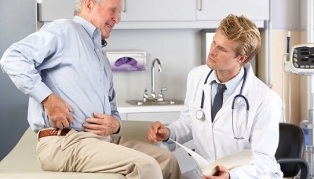
Hip arthrosis occurs in different ways. In the first stage of the development of the patient's pathology, almost nothing bothers, except the weak unpleasant, sometimes painful sensations, which pass independently.
Symptoms of hip arthrosis are specific and allow a preliminary conclusion (to make a diagnosis) already at the examination stage:
- Pain in the groin. This is the main symptom of the disease. If during the movement you feel that something is wrong in this area, try to visit a doctor as soon as possible. Pain from the groin usually travels along the front or side of the thigh, and may radiate to the buttocks or knee. Extremely it is extremely rare for pain in hip arthrosis to reach the middle of the calf muscle. The patient feels discomfort at the time of diving in the chair or getting up, or after a long walk.
- Limited mobility. This symptom signals that osteoarthritis of the hip joint (coxarthrosis) is already progressing. If you ask such a patient to sit "up a chair", ie backwards, he is unlikely to be able to do so.
- Chewing the hip joint while walking. It does not appear immediately, but with the progression of osteoarthritis and the destruction of cartilage. Its difference from the usual crisis of a healthy joint is a rather dry sound and pain syndrome of weak or moderate intensity.
- Shortening of the diseased limb. Occurs when the disease is already quite advanced.
- Crouches, falls on an injured leg due to partial or complete destruction of cartilage.
- Atrophy of the affected leg muscles. Visually it looks dry and unhealthy.
- Pain in the knee joint due to muscle atrophy.
Diagnosis
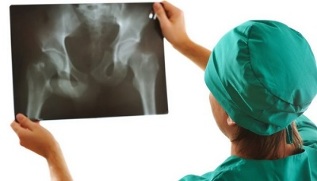
This moment is not too long for the patient. After a visual examination and questioning of the patient, the doctor prescribes a recommendation for blood donation - general analysis, biochemistry and rheumatism test. This is done in order to exclude the inflammatory process in the body. With osteoarthritis, all indicators are close to normal.
The next step is the instrumental exams:
- X-rays and / or CT.Computed tomography shows the nodes a little better.
- MRI. First appointed. Such a study is as informative as possible.
- Ultrasound of the joints.A sign of coxarthrosis in this study is a clear thinning of the cartilage. However, the accuracy of the result depends mainly on the qualifications of the specialist who deciphers the data obtained. Therefore, to diagnose the disease, it is prescribed in rare cases.
Consequences
If osteoarthritis of the hip joint is not treated, hoping that "it will probably go away on its own", the disease will actively progress. The consequences of such indifference to self are expressed in muscle atrophy and a clear shortening and drying of the diseased limb, at some point a person will not be able to move independently. Pain syndrome will become a constant companion of such a patient; even strong sedatives can not relieve it. The only way out of this situation would be joint replacement surgery - endoprosthetics.
Traditional Treatment
Can be categorized as medical and surgical. The second is used in the case when the first does not bring significant improvement with prolonged use.

Early stage coxarthrosis is quite curable:
- Medication.
- Manual therapy.
- Drag to a separate table.
- With PIR (relaxation after measurement).
- Therapeutic massage.
- Hirudotherapy.
- Healing gymnastics.
Medications
The task of drugs is multifaceted. Not only tablets but also oils, intra-articular injections are used. Tablets (capsules, sachets) are prescribed to relieve pain (non-steroidal anti-inflammatory drugs), to improve cartilage nutrition and to improve the quality of intra-articular lubrication (chondroprotectors), to relieve muscle spasm (relaxants ofmuscle).
Ointments and creams have the weakest effect and are used to warm and irritate. Their effect is close to placebo. At the moment of friction, the patient's body produces endorphins - hormones of pleasure, and they quite effectively relieve pain.
Cross-joint injections for hip arthrosis are very rare. This is due to the narrow joint space, which is quite difficult to enter, even with the use of special auxiliary equipment. The procedure is done through the hips and is so complex that ninety-nine percent of doctors prefer to inject medication into the periarticular sac by making a puncture in the side of the thigh.
By injection:
- Relieve high-intensity pain syndrome (corticosteroids).
- Feed the cartilage (chondroprotectors).
- Improves lubricant quality (hyaluronic acid substitutes - injected through the hips).
Nonsteroidal anti-inflammatory drugs are administered orally for mild to moderate pain. They also effectively extinguish inflammatory processes.
Manual therapy
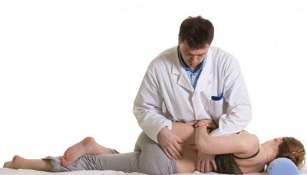
Treatment by an experienced specialist can decide patients with moderate coxarthrosis of the foot. The doctor's task is to restore movement in the joints, relieve pain. Manual therapy is divided into manipulation (a single effect on the joint) and mobilization (4 courses per year, 3 to 4 sessions each).
Mobilization allows you to stretch the affected limb with minimal pain. Expand the joint space, relax the tight muscles. Manipulation is permissible only in the early stages of the disease.
Pulling on a particular table also yields certain results, but is significantly lost by manual therapy. The machine (device), in contrast to the doctor's hands, does not feel the patient and, if used incorrectly, can cause harm.
PIR
Post-isometric relaxation involves active interaction between the patient and the attending physician. The meaning of the method is that the patient relaxes / tenses some muscle groups as instructed by a specialist. At this point, the doctor stretches his ligaments and joints.
This treatment for coxarthrosis helps relieve muscle spasms. The method is effective for coxarthrosis of grades I and II.
Massage
If you decide to use this method, you need to find a highly qualified specialist. Otherwise, instead of alleviating the condition, you can make it worse. The method is effective for grades I and II of coxarthrosis as adjuvants.
Massage for coxarthrosis should not cause pain. Feelings during the procedure are pleasant, relaxation and comfort should be felt.
Please note that there are contraindications to massage. Do not treat yourself.
Hirudotherapy
Treatment with caterpillars helps in the early stages of osteoarthritis of the thigh joints. The saliva of this worm improves blood circulation, cartilage elasticity and in itself contains many useful substances. It acts as a chondroprotector, only softer.
Rifles are placed not only on the thigh pain, but also on the sacrum, lower abdomen, lower back. You should complete 2 courses with 10 sessions per year.
Healing gymnastics
No illness can be cured or alleviated without a dose of exercise. Arthrosis of the hip joint is no exception. If you do not strengthen the muscles, their atrophy is inevitable, while the condition of the cartilage will deteriorate at a double speed.
It is preferable to study in separate groups under the supervision of specialists. The medical complex is chosen by a physician based on examinations, the degree of coxarthrosis, and the physical abilities of the patient.
Endoprosthetics
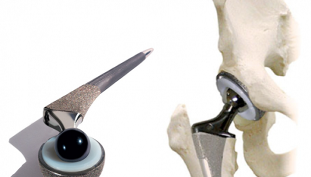
Surgical intervention is performed in stages III and IV of coxarthrosis, when conservative treatment gives minimal results or is not effective at all. The surgeon's task is to replace both the articular head and the acetabulum with artificial implants through a small incision in the thigh.
Now such operations are in broadcast. To imagine what awaits you if you ignore the first signs of coxarthrosis, imagine the course of the operation (in short):
- The patient is anesthetized.
- An incision is made in the thigh, the soft tissue is cut, the nerves are pulled back.
- The link is removed from its bed. In simple words, the doctor makes an artificial displacement to get the head.
- The head of the joint with part of the bone is removed.
- Acetabulum is cleared.
- An endoprosthesis, an artificial articular head, is inserted into the bone, or more precisely, "blocked".
- An artificial acetabulum is inserted.
- The union is repositioned. The doctor controls his movement by moving the limb in different directions.
- The wound is disinfected and sutured.
After surgery, a fairly long period of rehabilitation and adherence to a certain regimen is required.
Traditional methods
For fans of self-medication, it should be noted that coxarthrosis is a disease that should only be treated by a doctor. All the popular methods in the form of rubbing, lotions and "other unusual things" will not lead to anything good.
However, some traditional medicine prescriptions can be used to help with the first stage of the disease:
- Cabbage leaves.Used to relieve pain without taking analgesics and to facilitate "rotation" from the injured joint. At night, tie a few cabbage leaves to the thighs, after rubbing on the skin pure honey. Wrap the top with plastic wrap and something warm. In the morning, remove, rinse the remaining honey with cold water and repeat the compress. Repeat until the pain subsides.
- Honey and turnip ointment.Similar in action to cabbage leaves. You just have to tin it to cook it. The ratio of turnip and honey is 1/1. Twist root vegetables in a meat grinder, add honey, stir. Pour 50 ml of vodka or alcohol. Stir again. Rub into the affected joint until the pain disappears.
- Healing baths.For cooking, you need pine branches (some large branches), turpentine turpentine (1 teaspoon), bath salt (1 kg) and Jerusalem artichoke tuber cut into pieces (3-4 pieces). Fill with hot water and let brew. When the water is pleasant to take a bath, remove the branches and artichoke of Jerusalem and begin the procedure. When finished, put an iodine mesh on the thigh pain or rub honey, put something warm and go to bed.
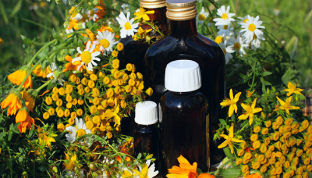
Osteoarthritis of the hip is a serious disease that occurs when a variety of causes are combined.
To avoid becoming disabled, do not wait for the consequences, undergo annual examinations, at the first feeling of discomfort in the groin area, see a doctor.



































